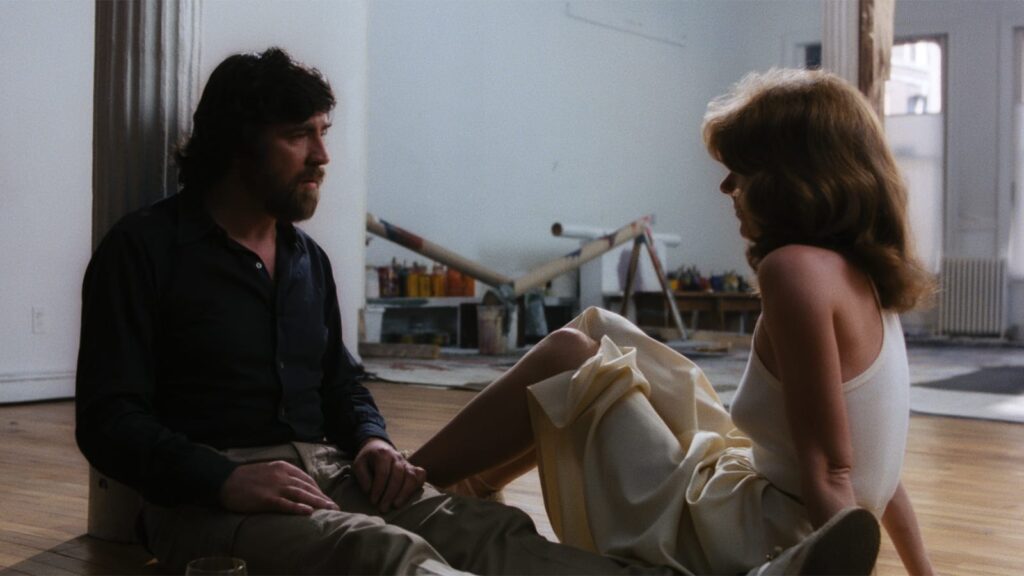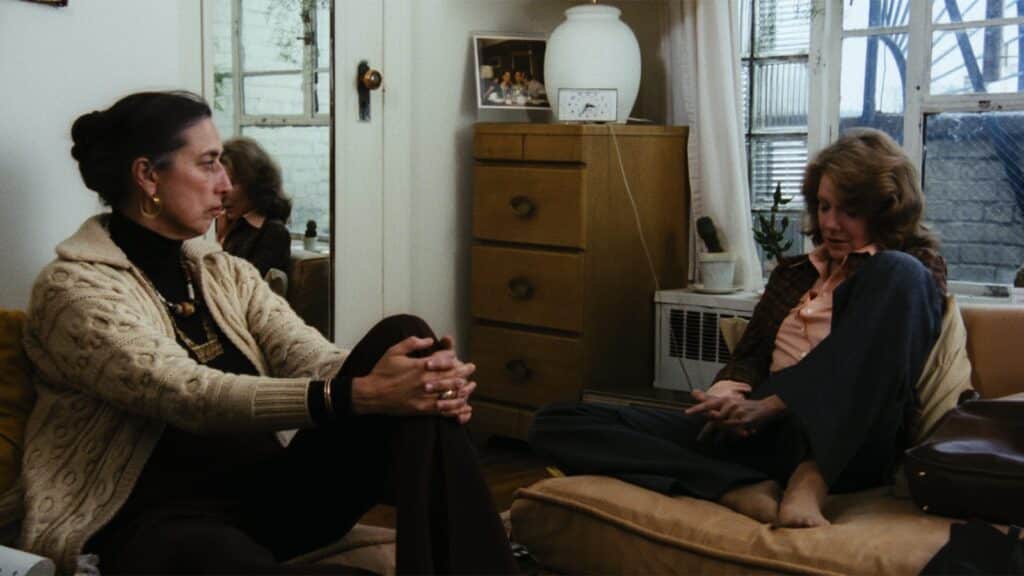Paul Mazursky’s 1974 drama captured the complexities of restlessness, desire, and sexuality of the modern ‘70s woman.
Sex is not shocking anymore. After years of cable television, the advent of pornography on the internet, and the “tasteful nude”, we’ve acclimatized to the idea of sex on screen. When An Unmarried Woman premiered at the Cannes Film Festival in 1978 this was not the case. Both on-screen and off, sex was still a taboo.
The 1970s was the decade of social change, of Gloria Steinem and Shirley Chisholm. It was a time in which abortion rights were on the table, women demanded access to contraception, the Equal Rights Amendment sought ratification, and 1975 was declared “International Women’s Year” by the United Nations. Still, despite the idea of “free love” and sexual liberation penetrating public consciousness, casual sex was frowned upon; in fact, a mere 29% of Americans saw “no problem” with sex outside of wedlock.
The ‘70s were a time of reinvention for cinema too, for the so-called “new-Hollywood”. Male soon-to-be-auteur filmmakers like Martin Scorsese, Robert Altman, and John Cassavetes were trying to dismantle the studio system by adding an injection of realism and grit into what had been a relatively chaste medium under the Production Code. Women were often absent from the director’s chair during this revolution (with the notable exceptions of Elaine May and Barbara Louden).

Still, several critical roles emerged that seemed to exist in tandem with the women’s movement. Jane Fonda in Klute, Ellen Burstyn in Alice Doesn’t Live Here Anymore, Gena Rowlands in A Woman Under the Influence, Faye Dunaway in Network, and Meryl Streep in Kramer vs Kramer typified the idea of the modern woman in the 1970s; someone who was complex, independent, lost, edgy, and, most importantly, not punished for her desires.
This ideology culminated in Paul Mazursky’s An Unmarried Woman as Jill Clayburgh plays Erica Benton, a middle-class wife and mother living in New York City. She works part-time, as a means to keep busy, at a small art gallery, but there is a sense of the restlessness that imbued women of that era. When Erica’s husband leaves her in bed as he heads out to work, she dances around her apartment in her underwear envisioning her ballet debut in a performance of Swan Lake. This is not a literal dream but rather the workings of a mind that wants more, something beyond the supposedly stable life she has built for herself.
That life dissolves quickly when her husband (played by Michael Murphy) leaves her for a 26-year-old he met in Bloomingdales. Her face, as he tells her, is almost resigned or expectant. As soon as she understands what he’s saying through his pathetic whimpers, she asks, “Is she a good lay?” then turns on her heel and leaves him in the street only to throw up around the corner.
Thus begins Erica’s new life, one of uncertainty, singledom, and sex. One in which her doctor makes a pass at her as she talks about her depression, old friends look at her with an unbearable sympathy, and she fends off entitled predatory men in the back of cabs. She is, now, the modern single woman. By the standards of the decade, the world is at her feet and, theoretically, she can have sex with whomever she likes.
The idea of desire and the pursuit of what we want in the wake of “liberation” is still ongoing.
Her friends are doing so; one is in a relationship with a 19-year-old, another is carrying on a semi-casual relationship with a cultural critic, and even her fifteen-year-old daughter is caught kissing her older boyfriend in bed. When Erica discusses her own sex life with her female therapist, she becomes defensive, unwilling to discuss specifics. She and her ex had a “pretty good sex life” she insists as if she has something to prove after admitting she always took sex for granted when she was married. “Go out and risk it with some new men,” her therapist tells her.
Spurred on, she sleeps with Charlie, an “out-of-style-chauvinist-pig” who has an aura of machismo and pride in his sexual activity. “I don’t get involved with my women,” Charlie tells her as they undress. “I’m a short-term guy, I don’t fall in love, and I don’t want to get married. The only thing you can count on me for is sex.” Though it’s clear the same is true for Erica – she has shown no real interest in him and is two glasses of wine deep when she asks to go back to his – but she can’t lay out her agenda in the same way he can. Instead, she has a laughing fit as he tries to seduce her and, semi-naked, she clasps her breasts self-consciously, laughing until the reality of the sex kicks in and she returns his passionate advances.
In contrast, after she sleeps with Sal Kaplan, an artist played by Alan Bates, she tells him he’s not her “lover” but rather a man she barely knows and, while casual sex isn’t her thing, she’s “experimenting.”
“I know it sounds a little cold, but that’s how it is these days? I just want to see how it feels to make love to someone I’m not in love with,” she says.
“How does it feel?” Sal responds.
“Sort of empty.”

In An Unmarried Woman, Erica has been freed from the institution of marriage and, after having sex with the same man for seventeen years, she has been able to sample the newfound perks of modern womanhood, but they don’t seem to fit her. As Erica is trying to figure out what she wants in the face of a newfound feminist life, she has to find her place post-marriage and post-liberation.
This, in essence, was surmised by Nora Ephron for Esquire in 1972. “I spend a great deal of my energy trying to fit feminism into my marriage, or vice versa,” she wrote in response to men who were under the impression there would be no sex after liberation because the undoing of gender roles would render most sexual fantasies moot. Yet, Ephron still found arousal in her “unliberated” rape fantasies and pondered, if we could ever “adjust fully to the less thrilling but more desirable reality of equality” once the idea of dominance and subservience was eradicated? Though, she fails to leave room for consensual fetishes and less gendered sexual power games.
The idea of desire and the pursuit of what we want in the wake of “liberation” is still ongoing. Just last month, the novelist Anne Enright wrote in The New York Review of Books that the contemporary woman is still just as torn between what she desires and what is expected, only now “society has been replaced by feminism as the system that tells you whom to love.” By this, Enright emphasizes the complexities of projecting feminist ideals onto a woman’s sexual partner and the guilt that comes with a refusal of that.
How do we manifest feminist principles in real life, and how do we consider those things that are ingrained within us, those taught behaviours or inherited desires, that might contrast with our feelings on social change? The “switch from authority to the dismantling of authority does not solve the problem of desire,” she wrote.

Films like An Unmarried Woman speak to many and keep reappearing in different iterations though, in contemporary cinema, the women are older. Clayburgh was 34 when she appeared as a woman floundering, but now, in 2o2o, there has been enough social movement that audiences are unable to consider 34 an age at which a life could be considered over. Instead, we see Paulina Garcia in Gloria (or Julianne Moore in the American remake), Agnés Jaoui in I Got Life!, or Isabelle Huppert in Things to Come, who are over fifty and trying to navigate sex and relationships.
These films, which Molly Haskell dubbed as “neo-women” or the “women adrift” film in Film Comment, delve into the void between want and expectation. How is a woman of a certain age supposed to act?
The most natural successor to An Unmarried Woman might be Claire Denis’s Let the Sunshine In, which stars Juliette Binoche as Isabelle, a divorced artist living in Paris. The film opens with Isabelle, naked from the waist up, in bed with her married lover and then proceeds to follow her as she meets, and sleeps, with various men.
Isabelle is far more embracing of casual sex than Erica, but still, she finds it monotonous and challenging in different ways. In one scene, she returns to her apartment after a fight with her lover and laments her life as she struggles to remove her knee-high boots. “Am I with him? Am I not? I don’t know,” she says to her empty apartment. “Is this my life?”
Whether it’s Erica finding that casual sex doesn’t quite fit her or Isabelle sitting somewhere in the middle, sex and the single woman is in a continual cultural flux. In the 1970s it meant exploring sex without commitment, but in 2020 we’re concerned with whether we’re tasting all the world has to offer. We worry about how vanilla our sex life might be. How progressive is it? Does it align with the ideas of contemporary feminism? We consider how to fit our desires into consensual scenarios, with essential safe words and contracts.
Erica has casual sex but also, at times, rejects it. She finds, despite the fact the option is available to her, she doesn’t have to take it. In doing so, she shows we are free to define our lives in response to social change however we see fit and Erica, who, in the end, chooses independence over Sal, epitomizes that attempt to navigate sexual freedom. As she says, when accused by Sal of wanting to be independent, she’s “trying to be.”
An Unmarried Woman Trailer: